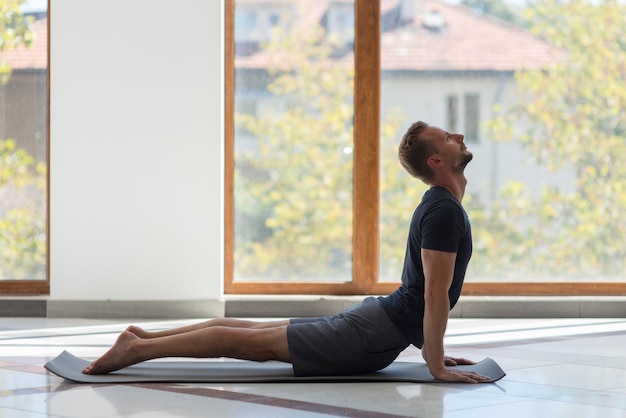30 Hidden Posture Mistakes You're Making (And How to Fix Them for Good)
Poor posture is more than just a cosmetic concern—it can lead to chronic pain, reduced mobility, and even impact your breathing and digestion. Despite growing awareness, most people unknowingly make daily mistakes that silently sabotage their posture. The good news? With targeted corrections and consistent habits, you can reverse the damage and build a stronger, aligned body.
Why Posture Matters More Than You Think
Your posture reflects how your body adapts to daily habits. Slouching at a desk, craning your neck at your phone, or wearing unsupportive shoes all contribute to misalignment. Over time, these small actions lead to muscle imbalances, joint strain, and poor neuromuscular control.
The spine has natural curves that absorb shock and support movement. When these curves flatten or exaggerate due to poor posture, it increases wear and tear on spinal structures.

30 Common Posture Saboteurs—and How to Fix Them
- Slouching at your desk – Keep your back straight, shoulders relaxed, and feet flat. Use a lumbar roll if needed.
- Chin poking forward – Gently retract your chin to align your head over your spine.
- Leaning on one leg while standing – Distribute weight evenly across both feet.
- Carrying heavy bags on one shoulder – Use a backpack with both straps or switch sides frequently.
- Looking down at your phone – Hold your phone at eye level to avoid 'text neck'.
- Sitting for long periods without breaks – Stand up and stretch every 30 minutes.
- Using a chair without lumbar support – Choose ergonomic seating or add a cushion.
- Feet not flat on the floor – Use a footrest if your chair is too high.
- Working on a laptop without elevation – Use a stand so the screen is at eye level.
- Sleeping on your stomach – This strains your neck. Try sleeping on your back or side.
- Using a high pillow – Choose a pillow that keeps your neck neutral.
- Wearing high heels – They shift your center of gravity forward. Limit use and opt for supportive footwear.
- Weak core muscles – Strengthen with planks, bird-dogs, and bridges.
- Tight chest muscles – Stretch with doorway stretches daily.
- Weak upper back muscles – Perform rows and scapular retractions regularly.
- Not engaging your glutes – Activate them when standing or walking to support pelvic alignment.
- Overarching your lower back – Avoid excessive arching during lifts or standing.
- Standing with locked knees – Keep a slight bend to reduce joint stress.
- Improper breathing patterns – Practice diaphragmatic breathing to support posture.
- Ignoring asymmetrical muscle development – Train both sides equally to prevent imbalances.
- Driving with the seat too far back or low – Adjust so your knees are slightly lower than hips.
- Carrying children on one hip – Switch sides often or use a carrier.
- Leaning on elbows while typing – Keep elbows close to your body at 90 degrees.
- Not checking posture regularly – Set hourly reminders to assess alignment.
- Skipping warm-ups before exercise – Cold muscles are more prone to poor form.
- Using a small phone or tablet for long periods – Larger screens reduce neck strain.
- Ignoring foot posture – Flat feet or overpronation affect full-body alignment. Consider orthotics if needed.
- Overtraining certain muscle groups – Balance pushing and pulling exercises.
- Not correcting posture after injury – Healing tissues can adapt to poor positions if not corrected.
- Stress-induced tension – Chronic stress tightens neck and shoulder muscles. Practice mindfulness or stretching.
Actionable Steps to Restore Proper Posture
- Practice the wall test weekly: Stand with heels, hips, shoulders, and head touching a wall. Notice gaps and adjust.
- Do daily posture drills: Wall angels, chin tucks, and shoulder blade squeezes take just minutes.
- Use posture apps or wearables: Get real-time feedback when you slouch.
- Incorporate yoga or Pilates: These improve body awareness and core strength.
- Get a workstation assessment: Ensure your monitor, keyboard, and chair support neutral alignment.

Track Your Progress: Simple Checks to See Improvement
- Weekly photo assessment: Take side and front photos in the same clothes and lighting to observe changes.
- Reduced pain or stiffness: Less neck, shoulder, or back discomfort is a clear sign of improvement.
- Improved endurance in standing or sitting: If you can maintain good posture longer, your muscles are adapting.
- Better breathing: Open chest alignment often leads to deeper, easier breaths.
- Feedback from others: Friends or coworkers may notice you stand taller or move with more ease.
Final Thoughts
Fixing posture isn’t about perfection—it’s about consistent awareness and correction. By identifying and eliminating the 30 common mistakes outlined above, you’ll not only look taller and more confident but also protect your long-term health. Start small, track your progress, and make posture a daily priority.

















